- Home
- Ramachandra Guha
Rebels Against the Raj Page 3
Rebels Against the Raj Read online
Page 3
While most girls had to be prepared through education for a life of motherhood and household management, there would, admitted Mrs Besant,
always be some exceptional girls who need for the due evolution of their faculties a more profound and wider education, and these must be helped to what they need as individuals, each to her own line. Such girls may be born into India in order to restore to her the learned women of the past, and to place again in her diadem the long lost part of lofty female intelligence.[13]
Mrs Besant’s emphasis on the spiritualization of education was at odds with the colonial curriculum, and – as notably – with the views of Indian liberals who believed in shunning the religious dogmas of the past while embracing the rational, sceptical, scientific approach of the modern world. Writing to the great Poona liberal Gopal Krishna Gokhale, Mrs Besant proclaimed: ‘I believe that India has been materialised, vulgarised and denationalised by leaving religion out of education; and all my efforts are turned to restoring religion to its proper place.’[14]
III
In her lecture of 1895 on the ‘means of India’s regeneration’, Mrs Besant had asked her audience to affirm the national spirit by ‘maintaining the traditional dress, ways of living and so on, by promoting Indian arts and manufactures, by giving preference to Indian products over foreign…’ Here, the Irishwoman turned Indian was anticipating the Swadeshi movement of 1905–7, when nationalists organized flamboyant bonfires of foreign cloth in protest against the political and economic exploitation of India by colonial rule.
The Swadeshi movement was at its most intense in the Bengal Presidency, where the anger against foreign goods, foreign ways of life, was compounded by the partition of the province in 1905, which had been bitterly opposed by the intelligentsia.[15] Although sympathetic to nationalist sentiment, Mrs Besant did not want to put her institutions at risk by associating publicly with it. She still wished to stay on the right side of the British Raj. The Hindu College in Banaras now had more than a hundred boys, and Mrs Besant sternly warned her Bengali students not to take part in popular protests against the Government. At this stage she was a Hinduphile (rather than Indophile), as well as an Empire Loyalist, careful not to explicitly foster sentiments of secession and independence among her wards.
While opening these schools and colleges Mrs Besant continued to be very active in the Theosophical Society. When the President of the Society, Madame Blavatsky’s long-time collaborator Colonel Olcott, died in February 1907, Mrs Besant’s supporters claimed that the Mahatmas in the Himalaya wanted her to be his successor. An election was held nonetheless, about which an industrious biographer provides some telling details. We thus learn that the Dutch section of the society chose Mrs Besant over her opponent by a margin of 781 votes to 1; the Germans by 583 to 20; the Cubans by 188 to 14. The Indians were thunderingly behind their Periamma, 3,571 to 47, and the British supported her solidly too, 1,189 to 261. The only substantial opposition to Mrs Besant came from the United States, but even here she won quite comfortably, 1,319 to 679.[16]
By now, the society’s headquarters at Adyar had expanded and consolidated itself quite considerably. It stretched for a full mile along the river; its eastern side abutted the ocean, with a private beach for the society’s members. The fields and gardens provided vegetables and fruits aplenty. Electric lights had replaced kerosene. There was even a dairy on the premises. When in town, Mrs Besant held court on the second floor of the handsome main building, sitting cross-legged on a cushion, speaking to visitors and admirers, or writing letters.
In 1909, Mrs Besant’s colleague in the Theosophical Society, C. W. Leadbeater, bumped into two beautiful young boys on the beach in Adyar. They were sons of a Telugu-speaking member of the society. Leadbeater thought the younger of the brothers had a wonderful aura about him; when Mrs Besant met him, she agreed. The boy, Jiddu Krishnamurti, had a lovely face and a serene countenance. Mrs Besant had always thought that the new World Teacher, the twentieth-century reincarnation of a Buddha, a Jesus, a Zoroaster, would come from India. She was easily convinced that the boy Jiddu would, under her tutelage, become the One.
Over the next two decades, Mrs Besant’s life was deeply intertwined with Krishnamurti’s. She founded an Order of the Rising Sun and anointed him its President (she herself was the Order’s Protector). Krishnamurti’s father took her to court, alleging that she had adopted his sons through fraudulent purposes; she fought him all the way to the Privy Council, retaining custody. She tried to get the boy admission into Oxford; according to one story, when she told the President of Magdalen College that her ward was the Son of God, the grandee replied: ‘Madam, we have the sons of many important people in our College.’[17] Eventually, the son himself walked out on the Mother, with Krishnamurti telling a massed audience of Theosophists that he was not anybody’s teacher, and they’d better find their own individual routes to enlightenment, without his assistance.[18]
Krishnamurti and his brother were found for Mrs Besant. Other young Indians joined her on their own, and with great enthusiasm. Their recollections speak of the enormous appeal that this renegade Irishwoman had for a certain kind of educated Hindu. The Bombay writer Kanji Dwarkadas joined the Theosophical Society in 1912, aged twenty, being admitted by Mrs Besant herself. Half a century later he recalled
the inner experience that came to me on account of her wonderful personal magnetism. The mighty figure with deep penetrating eyes, silvery hair shining on her head, clean unruffled face, looked as if a great messenger, who had her head with the high and mighty to the clouds, spoke to me once more after ages, with a view to showing me and leading me on to the path that one must tread if one has to reach the goal of the union with the One Life of which no creature is bereft.[19]
Among Mrs Besant’s closest companions in Banaras was the philosopher Bhagwan Das. His son Sri Prakasa joined the Theosophical Society as a boy, and came to regard Mrs Besant as a Mother. He admired many things about her, not least her oratory. As he wrote in an adoring biography, Mrs Besant
never carried any papers as she spoke. Her memory must have been remarkable, and I believe she just rehearsed her lectures to herself once, before going into the lecture hall; and that was enough for her. She never faltered for a word and her voice never broke. She told us in one of her talks how she was fond of beautiful perorations; how she liked to end her speeches by working up her audience to a certain pitch, leaving their minds in possession of some peculiarly tragic or pathetic scene created by the magic of her words.
Sri Prakasa added: ‘Mrs. Besant did not like any one to speak after her; and quite rightly too, for who could heighten the impression and the effect, of her speech? They could only mar them.’[20]
IV
Her former friend and erstwhile comrade George Bernard Shaw once described Annie Besant as ‘a woman of swift decisions’, who ‘always came into a movement with a bound, and was preaching the new faith before the astonished spectators had the least suspicion that the old one was shaken’.[21]
Mrs Besant’s abandonment of Socialism for Theosophy was at once a move from West to East, and from politics to spirituality. Indeed, it was because she had been so intensely engaged in public affairs before she came to India that she sought so resolutely to stay away from controversy once she was here. However, the subcontinent was no peaceable haven of freedom, where she could endlessly and unproblematically experiment with moral or religious ideas. It was a colonial regime, run on racist lines. So long as she focused on expanding the membership of the Theosophical Society or on getting more boys and girls into school, the facts of Indian subjecthood could be temporarily brushed aside. In the end, though, she could not escape them altogether.
In October 1902, Mrs Besant gave a talk in London on what she had learned from a decade in India on ‘the relations which exist between one of the greatest of conquering nations and the greatest of subject peoples’. The venue was the South Place Chapel in Finsbury, a district that had famously elected an Indian, Dadabhai Naoroji, to the House of Commons in 1892.
In her lecture, Mrs Besant analysed the relations between England and India under three heads: that of religion, that of education, and that of political relations. On the first count, she remarked that ‘India has more to teach than she has to learn’. She thought there was nothing in Christianity that did not already exist in Indian spiritual traditions. With regard to education, she said that modern Western learning had to be adapted to Indian conditions. With regard to political relations, she observed that the destruction of Indian industries and high taxation had been among the unhappy consequences of British rule.
At this stage, Mrs Besant’s criticisms of colonial rule were gentle and understated. She urged, on the ruling race, greater respect for a people with an old and sophisticated culture of their own. While she accepted that many British officials in India were hard-working and motivated by a sense of justice, nonetheless ‘they have a tendency to think they are so immensely superior to others that whatever is good for them is good for everybody else; they fail to understand the traditions and the customs which must exist in an ancient people, a people of high and complicated civilisation…’[22]
These well-meaning, politely worded, feelings were soon put to the test. For the first decade of the twentieth century witnessed an intensifying opposition to British rule; as in the aforementioned Swadeshi movement, which was both preceded and followed by bomb attacks in the three great Presidencies of Bengal, Madras and Bombay. Tempers ran high, nerves were fraught; and the colonial state sometimes reacted with excessive force. In 1910, there were a series of incidents wherein British officials harshly abused and even physically atta
cked Indians. Mrs Besant drafted an appeal urging the rulers to show respect and restraint. This angered the Governor of Madras, who wrote to her that ‘your words may be used to stir the impressionable youth of India to revolt. Some of your sentences shorn of their context may be seized upon and turned to undesirable purposes by those who are engaged in the task of stirring up strife.’ The Viceroy, weighing in, told this Irish defender of Indian freedoms that since the cases of official abuse ‘are comparatively rare’, giving them publicity was likely to vitiate relations between Europeans and Indians.[23]
Some students of Central Hindu College were itching to join the growing movement against colonial rule. When, also in 1910, Mrs Besant asked the Viceroy, Lord Minto, to become a patron of the college, he wrote back (via his Private Secretary) saying that since the students’ magazine had praised the militant nationalist Lala Lajpat Rai, he was therefore ‘doubtful whether he should support the institution, until the management has been brought more into line with the views of the Commissioner of Benares, who is evidently anxious to help the College in every way’.[24]
In 1907, the country’s main political organization, the Indian National Congress, had split into two wings. While Lajpat Rai was an Extremist, wanting to sever all connections with British rule, Mrs Besant was now engaging actively with the Moderates, liberal incrementalists who wished for greater self-government while retaining their ties with the Empire. Prominent Moderates like Tej Bahadur Sapru and Motilal Nehru had made donations to Central Hindu College.
Several Indian Theosophists were active in Congress affairs, which encouraged Mrs Besant to involve herself in the party too. Having dipped her toenails in these waters gingerly already, she now prepared for a more active engagement. Theosophy and education would no longer suffice to sustain her energies and her interests.
In January 1914, Mrs Besant announced that a new weekly would be published from the headquarters of the Theosophical Society in Adyar. It was to be called Commonweal, and its aims as enunciated in Mrs Besant’s first editorials were: ‘To hold a free platform for the expression of varied opinions on religious, educational, social and political problems, so that burning questions in all parts of the world may be threshed out, and truth elicited by a thoughtful discussion.’[25]
The pre-eminent Extremist leader of the Congress was the Poona firebrand Bal Gangadhar Tilak. In 1908 Tilak had been shut away in a prison in Mandalay on charges of sedition. He was released in June 1914, whereupon the waters of Indian politics began to be stirred more actively than ever before.
When Tilak came out of prison, Mrs Besant was in London. So was Tilak’s great rival, the Moderate leader Gopal Krishna Gokhale. Gokhale was sensible of the enormous prestige this Irishwoman had acquired among the Hindu middle classes. Were young patriots to be weaned away from extremism towards moderation, Annie Besant could be of enormous help. The two met several times in London in the summer of 1914. When Mrs Besant prepared to depart for India, Gokhale wrote saying that he planned to visit Madras for the annual meeting of the Congress in December, when, he hoped, ‘we may succeed in devising some new scheme which will bring together the more earnest spirits in the country in active cooperation in the service of the Motherland – yours now no less than mine and of other Indians’.[26]
Mrs Besant was now in her late sixties, yet entirely prepared to throw herself into the Congress movement. She bought the title of a defunct newspaper, the Madras Standard, and proclaimed her desire ‘to make it a power in the land’.[27] The paper was renamed New India, signalling that its editor’s ambitions were not provincial but properly pan-Indian. ‘Please do not have a fit’, she wrote to a Theosophist friend in England, ‘but I have bought a daily paper in Madras. It is needed for the work. It was a rag, but it will be a power…. It is quite exciting to edit a daily paper! I expect to make it good. I have cleared off all the coarse advertisements…’[28]
Writing to the Bengali Moderate Bhupendranath Basu in September 1914, Mrs Besant worried that ‘the Congress is losing touch with the younger men of India, and no longer raises the enthusiasm which was caused by it in its earlier days’. Two months later, she told Basu of her desire to bring ‘the Left Wing people’ back into the Congress. ‘The thing is to persuade our Left friends to come inside’, she said, ‘so that they may be represented in the discussion…Mr. Tilak is quite ready to talk things over, and with good will on all sides, a way should certainly be found.’ She concluded the letter with these emphatic words: ‘It will be a great thing for India if the whole Nationalist party is united.’[29]
V
In the late summer of 1914, as war broke out in Europe, in India Annie Besant had begun to see herself as more – much more – than just a member of the Congress. She was – or had decided – to be its glue, the healer of its divisions, the torch-bearer of its desire and ambition to represent all of India and all Indians.
In November 1914, Mrs Besant wrote to Gokhale that it was time to ‘close the breach between the Extreme Wing and the Moderates’, and ‘in view of the political changes which will follow the War to have a United India and to formulate its wishes’. The previously recalcitrant Bal Gangadhar Tilak, she said, was now prepared to ask for self-government within the Empire, and not separation or full independence for India. In early December she wrote again, saying she was coming to Poona to meet Tilak, since she would not think she had done her best ‘unless I try to persuade Mr. Tilak to behave reasonably, and fail’. If ‘the attempts to make peace fail’, she wrote, ‘it is necessary that India should know that Mr. Tilak is irreconcilable and that the fault lies with him’.
Sensing that Gokhale would be nervous about an out-reach to his bitter rival, Mrs Besant added this significant postscript: ‘Don’t forget re Tilak, that I have been in politics all my life, and worked closely with Charles Bradlaugh. You need not fear his making any capital out of my visit that I am not prepared for, and have discounted.’[30]
Gokhale remained deeply sceptical of Tilak’s intentions. As he wrote to Mrs Besant, ‘if the door was opened to him [Tilak], he would renew his attempts of 1906 and 1907 to capture the Congress for his views’. These views did not preclude opposing colonial rule by violence, if necessary. ‘Well, having experienced the full bitterness of that struggle’, continued Gokhale, ‘we should, I felt, be traitors to the cause we then saved from destruction after great exertions, if we offered, in the name of unity and reconciliation, another opportunity to men who will learn nothing and unlearn nothing to renew once again the old struggle.’[31]
Mrs Besant came to Poona and met Tilak. The talks failed, as Gokhale had warned that they would. Tilak saw her coming all the way from Madras as a sign of weakness, and made it clear that he would rejoin the Congress only if he and his group were in control of the party. After their meeting, Tilak wrote defiantly to Besant saying:
We do not wish to join the Congress as dummies who will admiringly look at the grave faces of the Moderate leaders and enthusiastically applaud their elegant speeches…. If we join the Congress, we shall do so for working out our programme by persuading the majority – if it be possible to do so – to our side.[32]
Mrs Besant had entered the Congress as a Mother, seeking to reconcile its squabbling children. Always secure in her self-belief, she thought that she would succeed where others had failed. Gokhale repeatedly warned her that the road would be far rockier than she presumed or hoped. A letter of January 1915 has him saying to her:

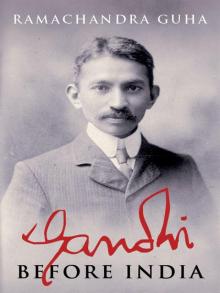 Gandhi Before India
Gandhi Before India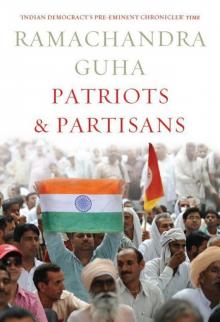 Patriots & Partisans
Patriots & Partisans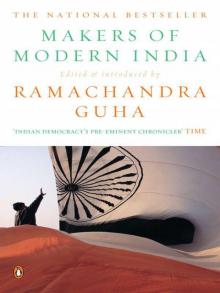 Makers of Modern India
Makers of Modern India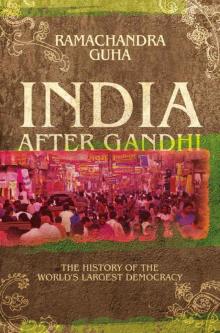 India After Gandhi: The History of the World's Largest Democracy
India After Gandhi: The History of the World's Largest Democracy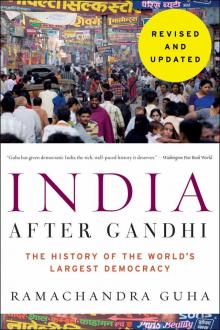 India After Gandhi Revised and Updated Edition
India After Gandhi Revised and Updated Edition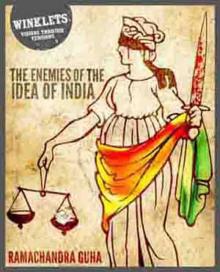 The Enemies of the Idea of India
The Enemies of the Idea of India Verdicts on Nehru
Verdicts on Nehru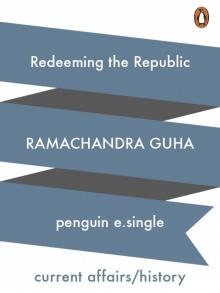 Redeeming the Republic
Redeeming the Republic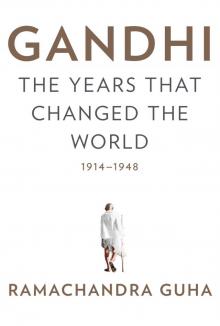 Gandhi
Gandhi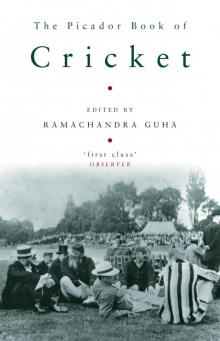 The Picador Book of Cricket
The Picador Book of Cricket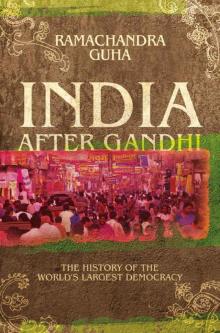 India After Gandhi
India After Gandhi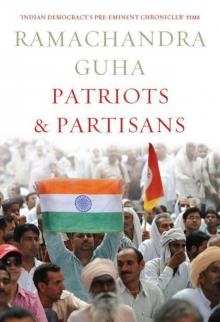 Patriots and Partisans: From Nehru to Hindutva and Beyond
Patriots and Partisans: From Nehru to Hindutva and Beyond